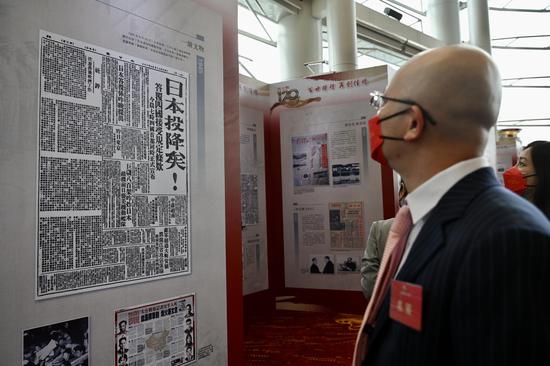China's National Health Commission on Tuesday issued diagnosis and treatment guidelines on the acute severe hepatitis of unknown etiology in children for early recognition as cases have been reported across multiple countries and regions with high proportion of severe cases since March despite that no current evidence proves it's an infectious disease.
Despite that no cases of acute severe hepatitis of unknown etiology in children have been reported in China at present, preparation for medical treatment in advance, including early recognition and standardized diagnosis and treatment of the disease, is strengthened and suggested by the guidelines based on relevant reports and literature, combined with hepatitis diagnosis and treatment practice.
More than 700 probable cases including 112 cases in investigation have been reported across 34 countries and regions so far this year, according to statistics from the World Health Organization (WHO). Of the roughly 700 children affected globally, at least 38 have needed liver transplants, and 10 died. At present, researchers in the US and European Union countries are still investigating the cause of the hepatitis outbreak which first made headlines in April.
Current existing evidence does not prove it to be an infectious disease since most of the reported cases appear to be unrelated and extensive epidemiological investigations are underway to identify common exposures, risk factors or links between the cases.
Long COVID may be the cause of unexplained cases of hepatitis in children around the world in recent months, Israeli researchers found in a study recently published in the peer-reviewed Journal of Pediatric Gastroenterology and Nutrition.
The new Israeli study analyzed the cases of five patients who were hospitalized in Schneider Children's Medical Center last year due to liver injury. All five patients had tested positive for COVID-19 before presentation of symptoms.
Adenovirus was regarded as the most suspicious cause of the unexplained cases of hepatitis in children in other investigations across the world. However, some of the patients in this research tested positive for adenovirus while others tested negative. Thus, the Israeli researchers think adenovirus may not be the cause for the liver issues, despite the fact that adenovirus usually causes severe hepatitis in immunocompromised patients, and these patients were healthy before experiencing hepatitis.
At present, there is no definite conclusion from the medical circle about the causes of hepatitis in children of unknown etiology in many places around the world. According to the WHO, laboratory testing has excluded hepatitis A-E viruses in these children but COVID-19 and/or adenovirus have been detected in a number of the cases, although the data reported to WHO are incomplete.
The WHO assesses the risk at global level as moderate considering the unknown etiology of this severe acute hepatitis, limited epidemiological, laboratory, histopathological and clinical information currently available, and the undetermined source and mode of transmission.
At this stage, the WHO recommends collecting blood, urine, feces and respiratory specimens (liver biopsy specimens if necessary) from suspected patients for pathogen screening, including adenovirus, novel coronavirus, cytomegalovirus, Epstein-Barr virus, chickenpox virus and herpes simplex virus.
China has mature technical reserves for pathogen detection, reliable nucleic acid testing and screening capabilities for the suspicious cases of acute severe hepatitis of unknown etiology in children, Xu Wenbo, head for National Institute for Viral Disease Control and Prevention with the China CDC, said during a press conference on June 9.
Presentation of symptoms for the disease include fatigue and poor appetite, nausea, vomiting, diarrhea, abdominal pain and other gastrointestinal symptoms, which are followed by yellow colors of urine, skin and sclera. Some children may have white feces, and suffer from liver enlargement, fever and respiratory symptoms. A small number of cases can develop into acute liver failure in a short time, with progressive aggravation of jaundice and hepatic encephalopathy, according to the guideline.
Although there are no recommendations for treatment from the WHO due to its unknown cause, the guidelines issued by China's health authorities have suggested comprehensive treatment measures with symptomatic treatment combined with supportive treatment. Complications have to be prevented by closely observing the changes of the conditions, assessing the mental state and monitoring laboratory indicators. Patients with liver failure should be promptly transferred to hospitals with treatment capacity.


















































 京公網安備 11010202009201號
京公網安備 11010202009201號